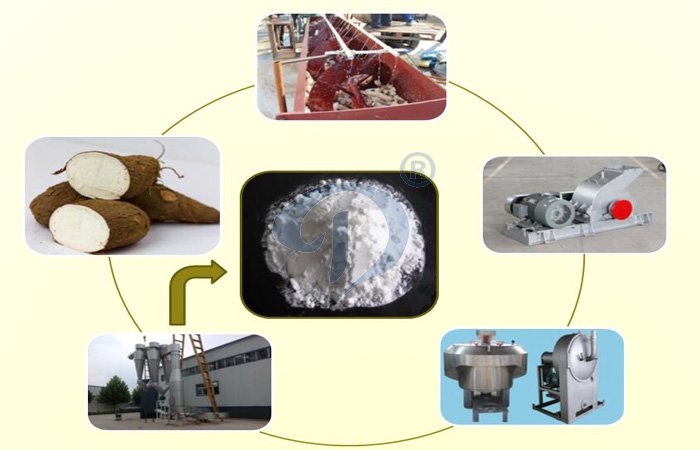Could cassava flour mixed with wheat flour for bakery?
Cassava flour used was obtained from cassava Mosaic Disease resistant clone of the international Institute of tropical agriculture Ibadan. Hard red wheat flour was obtained from Honeywell flour Mill, Lagos, Nigeria. Composite flour was made by mixing 10 parts of cassava flour and 90 parts wheat flour as approved by the Federal Government of Nigeria in November 2004. Other materials include granulated sugar, Fermipan baking yeast, baking fat. As wheat flour are mainly by importing, so wheat flour price in Nigeria is higher. In order to save the raw material cost, enterprise are starting cassava flour production line.

Cassava flour processing machine
Cassava flour production line introduction:
1. Harvest matured cassava from the farm and load it to the high quality cassava flour production line shed immediately. If the quantity of cassava harvested can not be carried in the same day for logistic reasons do not detach the cassava from the stem and leaf until the vehicle to carry it is ready. That is to say, fermentation will not occur if the cassava is still attached to the leaf and stem even if it has been uprooted. But care must be taken not to bruise the cassava when uprooting it.
2. Peel and wash the roots: Remove the stalk and woody tips from the roots. Peel the root with a hand-held peeler just like you would potatoes or carrots, then rinse them well. Peeling the root is also recommended since the peels naturally contain a very small amount of cyanide. However, it’s not a high enough amount to usually cause a problem and is nearly always thoroughly removed during manufacturing and heating.
3. Grate the roots: Grate cassava roots into a fine mash, using a hand-held grater or food processor.
4. Press and dry the roots: Pack the grated cassava mash into a clean bag or cheesecloth sack to press its water out. Get the cassava mash as dry as possible, then spread it onto a drying rack. Ideally, you can place the rack in the sun outside, or you can slowly dry the flour in a dehydrator or your oven at a low temperature. If you find that drying outdoors in the sun makes the cassava starch ferment and take on a sour, musty smell and taste, then use your oven instead. If you don’t have access to sunshine (it’s raining or you live in an apartment), this is a good time to dry cassava indoors too.
5. Mill and sift your flour: The dried cassava mash is ready when it produces a crumbly, white-colored flour. Gently mill/mash the flour into a fine texture with a mortar and sift through it to remove any clumps or leftover fibrous materials. Once it’s ready, you can use cassava flour in recipes right away or store it somewhere cool and dry for several months. Ideally use it within about three months to up to six months.
If you have any questions about the cassava flour processing machine,weclome to contact us,our engineer will give you a feasibility program according to your requirement.




